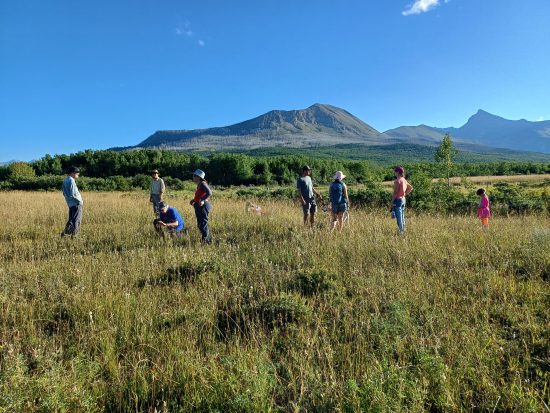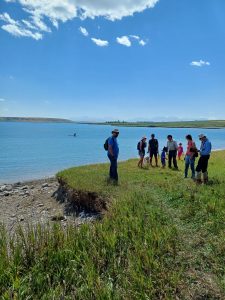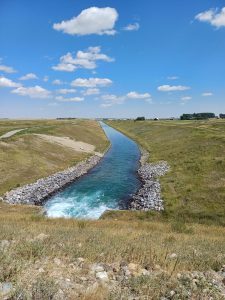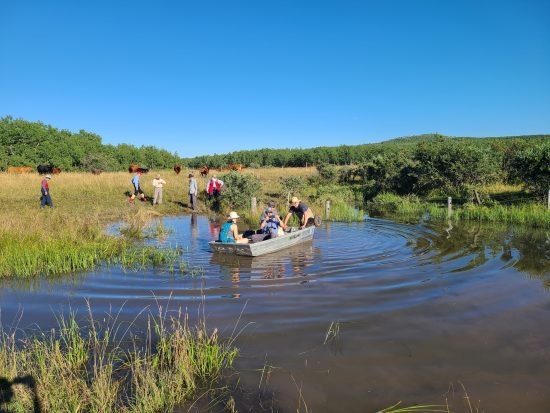
Adventure for Wilderness – A Tale of Two Dams August 17, 2024
September 18, 2024
- •
- •
- •
text by Christin Spatz
photos by Christin Spatz and Lindsey Wallis
At first glance the Waterton Reservoir looks perfect for recreation. With a beautiful view of the mountains many people visit the reservoir to enjoy their time on or in the water. This man-made “paradise” is illusory as we learned from Cheryl Bradley, a biologist, and cottonwood expert.
For the creation of the dam, eight km of the river was destroyed. As there is no tree cover around the reservoir and no ground vegetation, biodiversity has declined sharply in comparison to the river before. For fish, the dam is a big disturbance. Once they swim through the sluice there is no way back for them without the help of humans. Biodiversity in the river behind the dam has also declined sharply due to the lack of natural disturbances by floods. You will look in vain for cottonwood here, as the trees establish themselves after a flood. The most unexpected information was that this dam, built for water storage and flood control, has a higher rate of water loss through evaporation than other forms of water storage. The reason for this is the large water surface, which is exposed to the sun and wind.
After this informative presentation of a negative example by Cheryl, we went with Kirby England (a.k.a. the beaver guy) to a nearby ranch, where he showed us a better and natural way to storage water.
The beaver, in the past seen as a pest, is now a days a solution for storing water. To control the amount of land flooded by the beaver Kirby use a construction that channels a part of the water in the river behind the dam. That keeps the water level behind the dam at the same height.
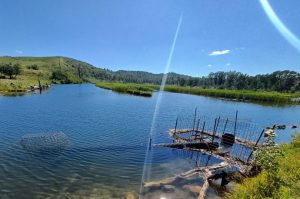 This compromise between humans and beaver allows a species-rich ecosystem to develop. Fish can move thought the dam without the help of humans and due to the vegetation around the water surface is shaded.
This compromise between humans and beaver allows a species-rich ecosystem to develop. Fish can move thought the dam without the help of humans and due to the vegetation around the water surface is shaded.
Next, after a short ride, we walked to a beaver dam to admire how he actively changes his environment. On the way to another beaver dam, we experienced first-hand how industrious beavers can be. After crossing a small, dammed pond with a boat we looked at a canal, which was created by beavers. This resulting small areas of water, with vegetation and tree cover, reduce the evaporation of the water in comparison to the Waterton Reservoir.
By the end of the day we all had a clear idea how important it is to protect beaver dams to improve water storage and biodiversity and how harmful man-made dams are for nature.
